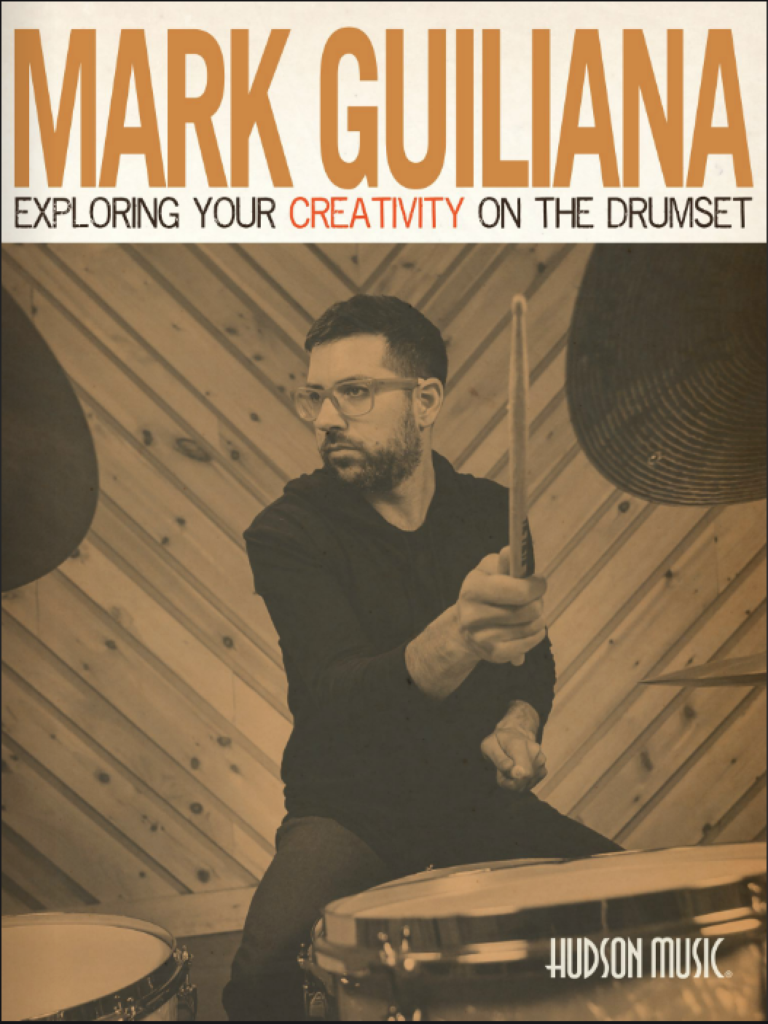By JJ Jones
Mark Guiliana is a drummer, composer, educator and producer who has earned international acclaim for his innovative and creative style. He’s most recently known for being the drummer on David Bowie’s last album Blackstar. Modern Drummer says of Mark, “For many observers, he’s the guy to watch if you want to know where the great art of drumming is right now— and where it could be headed.”
Reading Mark Guiliana’s new drum instructional book Exploring Your Creativity on the Drumset, I came away with a deeper understanding of the infinite possibilities that exist in rhythm, and on a drum kit. Unending possibility can inspire wonder and excitement, but can feel overwhelming too. Mark is definitely in the former camp. I tend to vacillate between the two, but Mark’s enthusiasm, and the example he’s set as a boundary-defying drummer, are pulling me toward his way of looking at things!
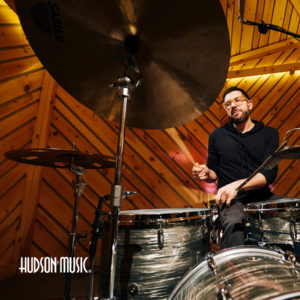
As a young player, Mark discovered that instead of creating and preparing specific ideas on the drums, it was far more effective to focus on the ways in which those ideas were built— the foundational building blocks. This idea forms the genesis of his book, the result of two decades of inspiration, experimentation and curiosity. Exploring Your Creativity is organized according to what Mark sees are “the tools that are fundamental in creating new ideas” on the drums: Dynamics, Rate, Orchestration, Phrasing, and their combination. And as is typical with most instructional books, more basic concepts are introduced toward the beginning and then build on themselves as one progresses through the material.
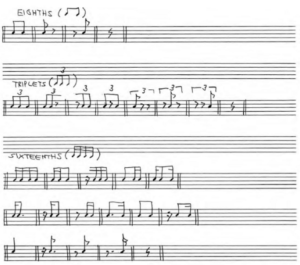
In “Rate,” Mark re-creates an exercise Joe Bergamini (his first teacher and editor of the book) gave him early on in his lessons, called Rate Variations (Figure 1). Using 8th notes as an example here, in the space of one beat, i.e. one quarter note, there are four different variations on an 8th note one could play: both notes, only the first, only the second, and neither. Triplets have eight variations, and 16th notes have sixteen. That means in the space of one quarter note, if one is using eighths, triplets, and sixteenths, there are 28 different variations that can be played! That’s just one beat. What about when those beat variations are strung together to make a phrase (covered in Rate)? What about when those phrases are then orchestrated on a 4-piece drum kit (covered in Orchestration)? What about when you then move those phrases around so they start and end at different places in the measure (covered in Phrasing)? How many possibilities and combinations then?
You can start to see the math that’s involved here, but that’s the profound power of the basic premise of Exploring Your Creativity: using the simple to make the complex, the few to make the many, the same to the make the unique. A lot of very simple beat variations can be strung together to make an extremely complex musical statement. And just a few variations of rate and orchestration can make for a huge number of usable combinations. And the same fundamental musical building blocks – rates, orchestrations and phrasing – can make for a totally unique creative expression every time they’re employed.
This is obvious when you think about it — all music is made this way — but the way Mark presents it really hits home. And his excitement at how the combination of these basic building blocks make for an unlimited number of musical possibilities comes across on every page. At one point he writes, “My favorite thing about this material is that no two of us will come out the other side with the exact same thing.” His awe at this fact is apparent (and infectious!) throughout the book.
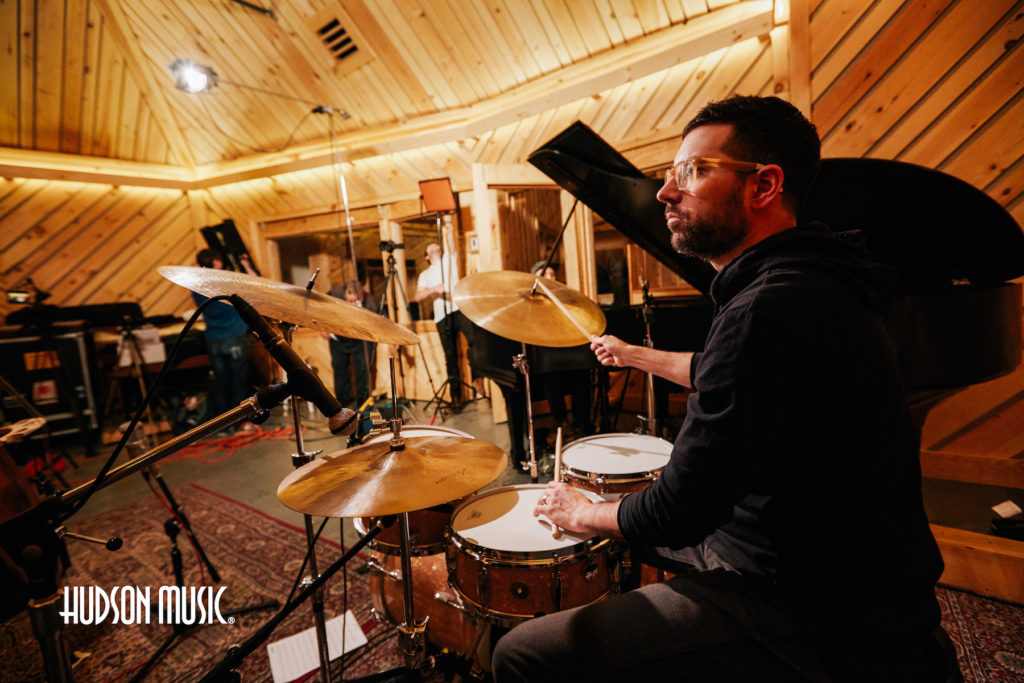
While reading Exploring Your Creativity, I was reminded continuously of an analogy I use with my drum students: a painter’s palette. In the beginning, you might only have the colors red, blue and yellow. But as you acquire new skills (building blocks), you are in effect adding more colors to your palette with which to create — “painting” on the drum set, if you will.
In Mark’s case, he might be a Picasso of the drums. A museum curator once said of Picasso, “[He] used the common tools and mediums available to all artists of his time. His genius lies precisely in being able to perform such experimentations with commonly used tools.” Mark’s approach in this book is methodical, mathematical, and traditional, but by having complete command of those common, traditional building blocks, on a very common, traditional 4-piece drum kit, the outcome in his case is the ultimate in uniqueness, creativity, possibility, expression, and to use a phrase of Mark’s, “musical identity.” He writes, “A limited vocabulary doesn’t come from one’s instrument, it comes from one’s limited imagination. Over time, the combinations of these [building blocks] will begin to create seemingly infinite content that is unique to YOU.” Okay, now I’m really starting to tap into the excitement of infinite possibility!
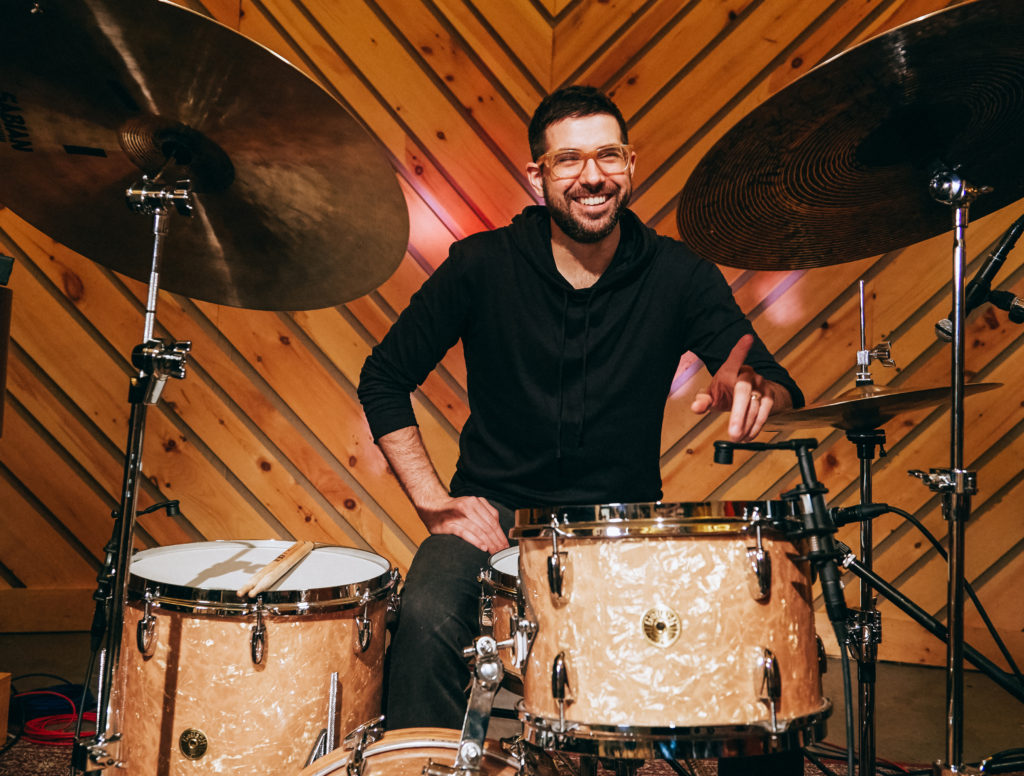
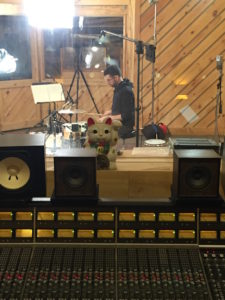
I contributed to the PledgeMusic campaign for Exploring Your Creativity, and at one point they showed us an interview with Mark in the studio. A fan asked him: At what point did you realize you were developing something of your own? Mark answered, “Anytime I have tried to be unique I have failed because that was a false intention. Serve the music, play for the music. Take the most used, traditional setup and find your own personality and unique statements, that’s a much more honest intention.” In our age of YouTube and social media where drummers often try to stand out by doing something explicitly “unique,” this philosophy seems almost antithetical. Mark says to instead, “Develop a relationship with as many different possibilities on the instrument that you can. Then you have more of a chance of making your own unique decisions .” (emphasis mine)
I think these statements encapsulate Exploring Your Creativity, and they inspire me as well. I can find myself feeling demoralized about how to make my own musical statement as a drummer, how to be unique when there are so many other drummers trying to do the same. Mark reminds us that our uniqueness as artists comes not from doing what no one else has done, but purely in serving our art the best way we can.
Click here for Hudson’s webpage for Exploring Your Creativity on the Drumset.
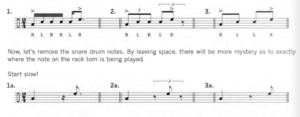
One of my favorite things in the book is a page titled “Ear Training” (Figure 2), and involves an exercise for training yourself to hear the difference between rates (16ths, triplets and 8ths). By playing a phrase of each, then removing the notes in the middle of each phrase, “there is more mystery” as Mark writes, as to exactly where the last note is being played in relation to the first. The effect blew my mind a little, especially when I could hear each side-by-side. Listen to these transcribed phrases back-to-back, where I’ve removed the middle notes as Mark suggests. Try changing the tempo too. The note on the rack tom appears to be drifting away from the note on the floor tom (on the 1), from rate to rate:
16th-Notes https://goo.gl/OrveyS
Triplets: https://goo.gl/PZSCci
8th-Notes: https://goo.gl/3eM3In
This trailer from Hudson gives a really nice overview of Exploring Your Creativity:
To get a feel for the videos and material contained in the book and DVD, check out this sample lesson on Orchestration:
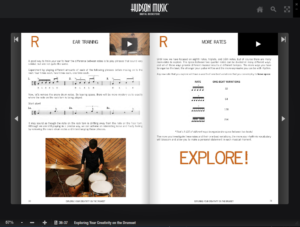
A note on format: Exploring Your Creativity on the Drumset is available as a printed book with companion DVD, but also as an eBook, which requires the Hudson app to view. I downloaded both the Mac and iOS versions, and was very impressed. In the app, videos are interspersed throughout the book: an intro for each section, songs and solos illustrating particular concepts, and demonstrations of each exercise where you can follow along with Mark as he plays and explains. The demo videos are small and nested in the upper right-hand corner of the page, so you can read and follow along with the transcriptions on the full page while the video is playing simultaneously up top. Really great! The only downside I can see is that the videos won’t play unless you’re online, and you can’t print (which is tough in this case in particular, since Exploring Your Creativity contains worksheets where the student is supposed to fill in their own phrases.) Minor inconveniences, though. Having now had the experience of a drum book in this format, it will be hard to go back to the old printed ones!
All book excerpts and photos are courtesy of ©2016 Iron Horse Entertainment Inc./Hudson Music LLC
JJ Jones is an internationally touring, Berklee-trained drummer and educator. She has played with folk-pop darlings Girlyman, singer/songwriter Lucy Wainwright Roche, comedian Margaret Cho, LA’s riot-pop band WASI, and Egyptian revolutionary Ramy Essam, among many others. She is the founder of EmpowerDrumming.com.


